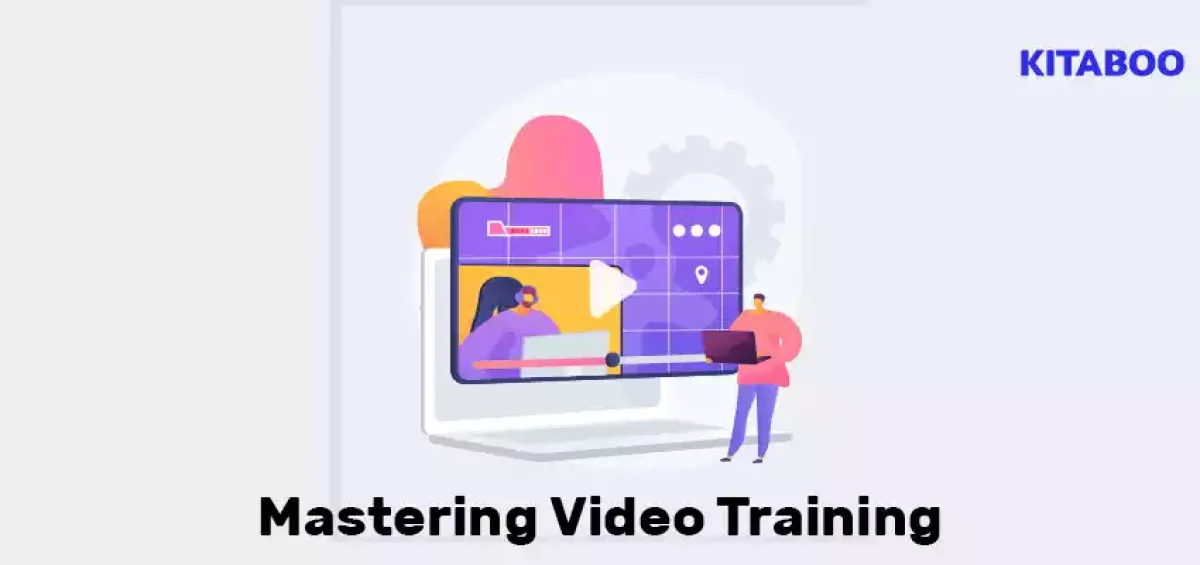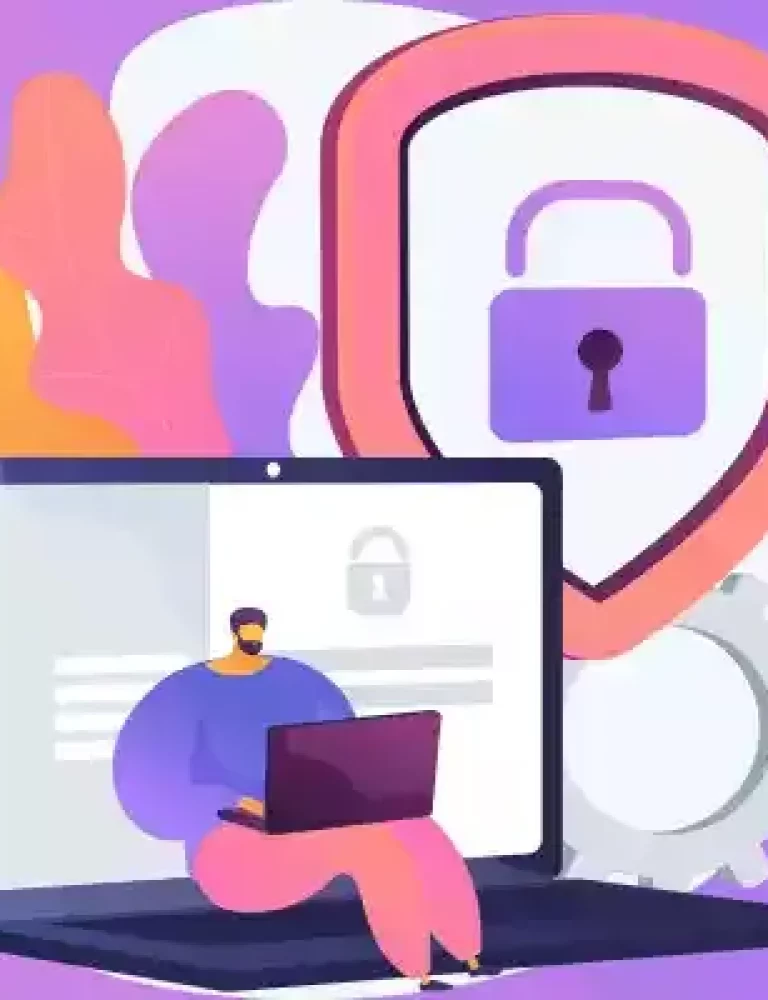In an era where digital learning has become pivotal, understanding how to optimize the use of video training content can transform the educational experience, making it more engaging, effective, and enjoyable.
To guarantee that your video training captivates learners, it’s essential for Learning and Development (L&D) professionals to excel in crafting the right types of videos and using them effectively to convey subject matter expertise and assist learners in achieving their goals. This is where cloud-based digital textbook platforms like KITABOO come in handy, enabling publishers and institutions to create informative and compelling video training content.
Additionally, video training content helps improve knowledge retention and comprehension, allowing learners to grasp complex concepts effortlessly.
Table of Contents:
I. The Power of Video-Based Learning: Transforming Education and Training
- Accessibility and Flexibility
- Catering to Diverse Learning Styles
- Enhanced Engagement and Retention
- Scalability and Cost-Effectiveness
- Real-World Application and Skill Development
- Continuous Learning and Professional Development
- Personalized Learning Experiences
II. How to Master Your Learning Skills through Video Training Content?
The Power of Video-Based Learning: Transforming Education and Training
Here’s a snapshot of the power of video-based learning in today’s digital realm:
Accessibility and Flexibility
One of the most significant advantages of video-based learning is its unparalleled accessibility. Learners can access high-quality educational content from anywhere in the world at any time that suits their schedule, breaking down geographical and time barriers.
This flexibility empowers individuals to learn at their own pace, pause and revisit complex topics, and balance their educational pursuits with personal and professional responsibilities.
Catering to Diverse Learning Styles
Video-based learning is inherently versatile and appealing to auditory, visual, and kinesthetic learners alike.
By incorporating elements such as animations, real-world footage, and interactive components, videos can present information in a manner that is engaging and easier to digest. This multimodal approach addresses the varied preferences of learners, ensuring that each individual can engage with content in a way that best suits their learning style.
Enhanced Engagement and Retention
Videos have the unique ability to captivate learners’ attention through storytelling, visual effects, and emotional resonance. In fact, 65% of users are visual learners. By presenting information in an engaging and relatable context, video-based learning fosters higher levels of engagement, which is crucial for learning retention.
Moreover, studies have shown that learners are more likely to remember information presented in a visually dynamic and interactive format, leading to improved understanding and retention of new concepts.
Scalability and Cost-Effectiveness
For organizations and educational institutions, video-based learning offers scalability and cost-effectiveness.
Once created, a video can be distributed to an unlimited number of learners without the need for additional resources or instructors. This scalability ensures that high-quality education can reach a broader audience at a fraction of the cost of traditional in-person training methods.
Real-World Application and Skill Development
Video-based learning can bridge the gap between theoretical knowledge and practical application. Through demonstrations, simulations, and case studies, learners can see how concepts are applied in real-world scenarios, enhancing their ability to translate knowledge into practical skills.
This hands-on approach is particularly beneficial in fields that require technical proficiency, problem-solving skills, and critical thinking.
Continuous Learning and Professional Development
The digital nature of video-based learning facilitates continuous learning and professional development. With the rapid pace of technological advancements and changing industry standards, professionals need to stay updated with the latest knowledge and skills.
Moreover, digital textbook platforms like KITABOO offer a dynamic solution for continuous learning and professional development. This way, individuals can access a wealth of curated video training content, providing them with a flexible and interactive means of acquiring new insights and honing their expertise.
Personalized Learning Experiences
Advanced video-based learning platforms incorporate adaptive learning technologies that personalize the educational experience for each learner.
By analyzing learners’ interactions, performance, and preferences, these platforms can recommend customized learning paths, suggest additional resources, and adjust the difficulty level of content. This personalized approach ensures that learners are neither overwhelmed nor under-challenged, optimizing their learning journey.
How to Elevate Your Skills through Video Training Content?
Follow the steps mentioned below to elevate your skills through video training content:
1. Set Clear Learning Goals
To effectively utilize video training, it’s essential to start with clear learning objectives.
Setting SMART (Specific, Measurable, Achievable, Relevant, Time-bound) goals can help you focus your efforts and provide a roadmap for your learning journey. And clear objectives allow you to select video content that aligns with your goals, track your progress, and stay motivated throughout the learning process.
So make sure you define what you want to achieve through video training, whether it’s acquiring a new skill, enhancing existing knowledge, or staying updated on industry trends.
2. Engage in Active Learning
Active learning is about interacting with the content beyond just watching and listening. This might involve pausing the video to reflect on the material, relate it to personal experiences, or apply it to real-world scenarios.
Engaging with the content in this manner promotes deeper understanding and critical thinking, allowing learners to not only grasp theoretical concepts but also understand their practical applications.
3. Implement Spaced Repetition
Spaced repetition is a learning technique that involves reviewing material over increasing intervals of time. Instead of cramming information in a single session, spaced repetition leverages the psychological spacing effect to enhance long-term memory retention.
By revisiting key concepts at strategic intervals, learners can improve their recall and understanding of the material, making it a powerful strategy for mastering complex subjects.
4. Utilize Interactive Features
Many video training platforms offer interactive features such as quizzes, exercises, and discussion forums. These tools provide an opportunity to test your knowledge, apply what you’ve learned in a practical context, and engage with a community of learners.
Interactivity not only makes learning more engaging but also helps to reinforce understanding and encourage the application of knowledge.
5. Utilize The Role of Feedback and Collaboration
Learning is not a solitary journey. Seeking feedback from peers, mentors, or instructors can provide new insights, clarify doubts, and deepen understanding.
Collaboration offers a platform to share ideas, solve problems collectively, and learn from the experiences of others. Engaging in discussions and group activities can enrich the learning experience, fostering a deeper comprehension of the material and its real-world applications.
6. Apply Knowledge Practically
One of the most effective ways to solidify learning is through practical application. Implementing new knowledge in real-life projects or scenarios allows learners to test their understanding, refine their skills, and gain confidence in their abilities.
Practical application not only reinforces theoretical concepts but also provides valuable experience that can be applied in professional or personal contexts.
7. Reflect on Your Learning Journey
Reflection is a powerful tool in the learning process. Taking time to reflect on what you have learned, how you have applied it, and what outcomes have resulted can provide valuable insights into your learning process.
Reflection helps identify areas of strength and areas needing improvement, enabling learners to adjust their strategies and approaches for better outcomes in the future.
8. Stay Curious and Explore Further
Curiosity is the fuel that drives continuous learning and growth. Beyond the confines of specific video content, exploring related topics, seeking out advanced materials, and engaging in lifelong learning can open new horizons and opportunities. So stay curious and open to new ideas to enhance and elevate your skills continually.
Wrapping Up
Video training content offers a dynamic and flexible learning medium that, when utilized effectively, can significantly enhance learning outcomes.
By selecting high-quality content, setting clear goals, engaging actively with the material, and applying knowledge in practical contexts, learners can maximize the benefits of video training.
By leveraging cloud-based digital textbook platforms like KITABOO, you can create engaging content that enhances the learning experience and boosts retention, all while staying cost-effective. KITABOO not only provides a curated repository of video training content but also facilitates a seamless and interactive learning environment.
Connect with us to start a conversation!
Discover How An Ebook Conversion, Publishing & Distribution Platform Can Help You
Kitaboo is a cloud-based content platform to create-publish & securely distribute interactive mobile-ready ebooks.
You May Also Like







